So, you’re looking for advanced SEO copywriting tips.
Okay, I’m sure that since you’re here, you’re either:
Working for an agency and you need to write copy for your clients.
Running your own business and looking to build some conversion-focused landing pages.

If you fit one of those labels, then you’re in luck. In this article, I am going to be giving you 11 tips to improve your copywriting skills so that you can match landing pages like SEO That Works, Copyhackers, or Kopywriting Kourse
What Is SEO Copywriting?
SEO copywriting is one of the most important practices you need to learn during your career.
Whether you work for an agency or yourself, it’s something you will need to know, regardless of your skill level. Everyone who is in this type of industry needs a firm grasp on effective copywriting.
So, what exactly is SEO copywriting?
SEO copywriting is an advanced form of writing that is not only quality writing;
But also helps your content to rank higher on search engines (such as Google, Bing & Yahoo), brings targeted traffic to your website & targets readers using specific key phrases based on information they want.
How exactly is it different from standard copywriting. Aren’t they just the same?
The most significant difference you will find between copywriting and SEO copywriting is that SEO copywriting contains specific keyphrases.
For example; African Grey Parrot
The term “African Grey Parrot” is a specific keyphrase. Typing keyphrases into search engines is how we find stuff and that is how we get the answers to our questions & inquiries or are directed to where we want to go.
So, for example, if I wanted to go see images of African Grey Parrots, I would simply search that in Google or any other search engine. However, if I wanted to know where to buy an African Grey Parrot I would search something more along the lines of:
“Where To buy African Grey Parrots” or “African Grey Parrots for sale”.

Though, SEO copywriting entails a lot more than just key phrases. Inserting key phrases into your content won’t simply make your efforts a success.
Search engines want AUTHORITY. They want to see high-quality content that will answer readers questions in detail and they want to see content that stands out from the competition, not just the general run of the mill information.
Why SEO Copywriting Is Important
People seem to believe that as long as you have a keyword and content that you can just put the keyword (or key phrase) in the content over and over again and it will just work.
Wrong.
Keyword stuffing (using your keyword/key phrases over and over again) is one of the most hurtful things you can do to your content and search engines will severely penalize you for it. (link to a resource)
Search engines are stupid (but becoming smarter with every update) and things aren’t how it used to be. Yes maybe at one-time keyword stuffing may have worked but search engines change, algorithms change and effectively “the rules” change.
Search engines don’t want mediocre content, they don’t want just any old rubbish in the top spots when it comes to rankings.
Search engines want the highest possible quality of content.
So, you may be thinking, what’s “high-quality” content?
In simple terms, high-quality content is content that covers a topic well (satisfying search intent) or is entertaining. Let’s use email marketing as an example.

If you’ve been trying different ways to grow your returning visitors to your blog, one way to do that would be through email marketing.
A piece of content that entirely covered email marketing along with some tips to how to get started with email marketing would be considered “high-quality,” because it satisfies the questions you had about the topic.
Comparing that to “mediocre” content, mediocre content would still be helpful in this case, however, it would leave you (the user) still asking questions.
In that situation, you may decide to go and look at another guide on the topic (increase that website’s bounce rate). That is how Google (and other search engines) define “high-quality” content.
So, this is where you as a writer have to satisfy two separate parties. Not only do you have to make sure that your readers are satisfied with your content and like it, but you also have to make sure that you satisfy search engines because the readers are their top priority.
Search engines need to effectively understand your content and see clearly what is written in your content and it needs to satisfy its purpose.
Using our African Grey Parrot example from earlier; If you write an article titled “12 Mysterious Facts About African Grey Parrots” and then write an article with 3 parrot facts then talk about porcupines, that’s not really serving its purpose is it?
So you need to make sure that your content complies with your readers & search engines. That’s where SEO copywriting comes in.
Best Copywriting Practices
There are some practices you need to put in to use when writing copy. Otherwise, your writing will fall apart and your efforts will effectively be for nothing.
This is a general guide and practices I use myself, however, you may find tips from other people such as Brian Dean & Neil Patel who are absolute guru’s in the writing world.
Build A Persona & Write Persona-focused Copy
Building a persona is going to make your job easier for writing content as you have an “ideal person” to write content for.
For example:

Your persona can change depending on the type of content you are writing. Not everyone is going to be a John Smith Looking for content creation guides but keeping this as our example:
What kind of content could you write for John?
Well, you can write guides such as:
Build A Business With No Money Learn How To Write Content In X Easy Steps Motivation For The Online Entrepreneur
And then practice making copy for your ideal customer. Take their wants, needs, and interests in mind as you are writing, write content for them.
Make It Easy For Readers To Get Their Answers
Why do people use search engines? It’s to answer questions, queries or find out information right?
Well, you need to write straight forward content that answers users questions or provides them the information they are looking for.
On the spot pick a niche, any niche at all! Or any random subject matter. For me, the first thing that came to mind was Aloe Vera water. Now, think about questions that could be asked related to what you personally thought. For me, I might think….
- Where can I buy aloe vera water?
- What is in aloe vera water?
- How aloe vera water is made?
- Does X store sell Aloe Vera Water?
Now, the theme all of these have in common is I have a question that needs to be answered and if I search one of them, I do expect to get an answer.
You can’t write content that promises a solution and then you just leave the solution out of it. You need to take searcher’s intent into focus here and actually write based on it.
Write for featured snippets
A featured snippet is “position zero” on search engines. Yes, people aim for position #1 when ranking but the best thing you can get is a featured snippet.
For example; If you search “How To Choose A New Phone”
You would see a big block above the other searches with text information and a picture, this is the featured snippet.
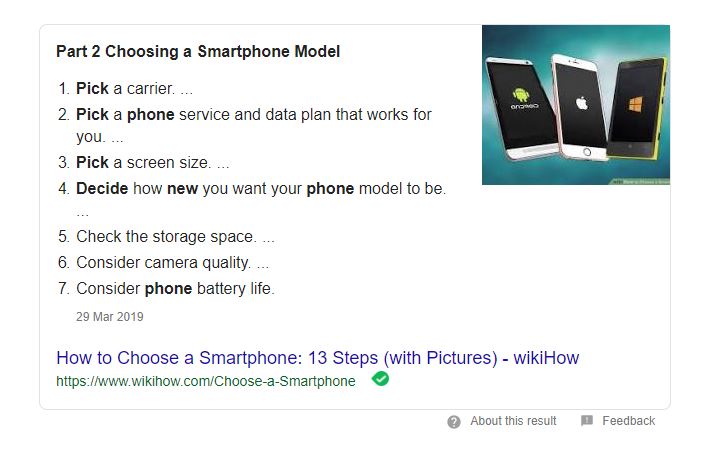
Search engines will take the information directly from the content that is already ranking on page one. The featured snippets fulfill a purpose by answering search queries directly so you don’t have to read through an article to do so.
Featured snippets take up a large section of search results and in turn, drive more traffic to your website than compared to if you were only ranking in position #1.
There are four types of featured snippet:
- List
- Paragraph
- Tables
- Video
A list snippet is usually something that is done step by step or provides the answer in a list format (see below)
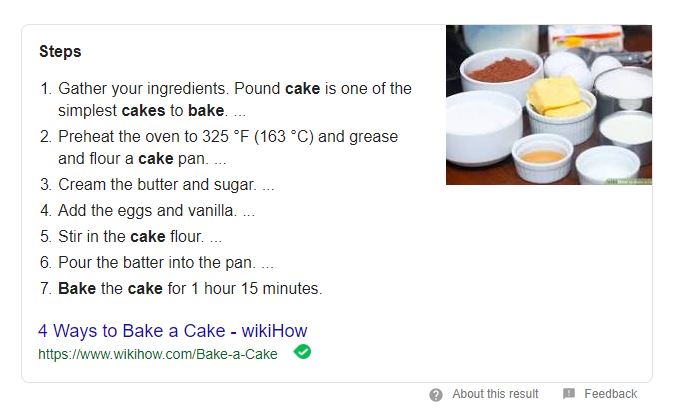
A paragraph style snippet is pretty self-explanatory but its something that is answered in a text paragraph rather than a list (or one of the other options)
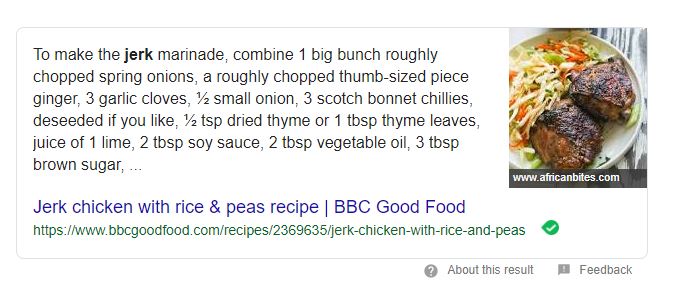
Table snippets are answered in, well, tables! Usually to do with numeric data but it can vary.

And finally, video snippets, if there is something that can be better shown in a visual format, then you will usually see a video instead of text.
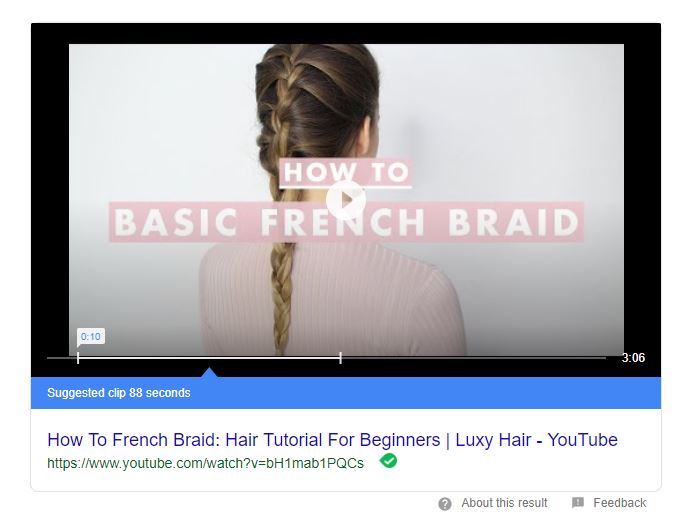
So, how exactly do you write for featured snippets? It’s simple, beat your competition! Take a look at which websites have gained featured snippets and take a look at what they are doing, what is different to what you are doing?
You need to optimize your content exactly for topics and keywords you’re trying to rank and write your content better than your competitors.
Compelling Headlines (How To Write Them)
The goal of writing is to get people to read your content right? But what if they don’t even make it as far as to click on it?
Bummer.
That’s where headlines come in, the purpose of your headline is to draw in your reader’s attention and make them want to read your articles.
How do you write a compelling headline though? How do you make readers want to click on your content and pay attention to what you have to say?
Well, there are a few tips.
- Make sure your headline matches your content.
- Add your keyword/s within the first 62 words (Or make your headline 62 words or less)
- Use specific (number) data eg: “52 Ways To Grow Your Business”
- Use a unique rationale eg: tips, tricks, ideas, facts, etc.
- Call for action: Be specific, be unique, create a sense of urgency & be useful.
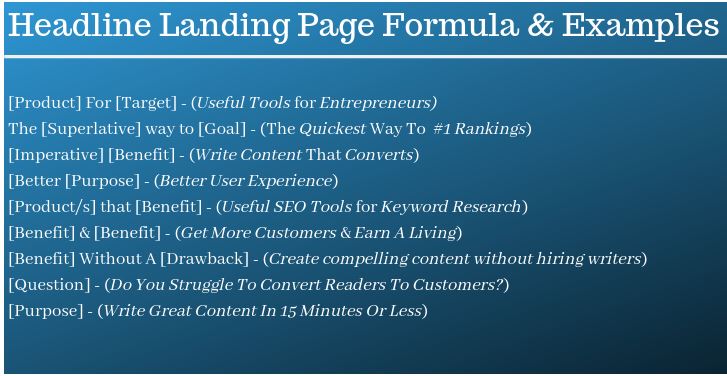
Make Sure your content matches your description
Making sure your content matches what is described is very important. If your content is described to be “funny & whimsical, yet deviously curious anime facts” and you talk about toilet brushes, well that’s just going to confuse your readers.
It also means your content isn’t fulfilling its purpose, it’s not even close to doing so.
In the same way, if you promise your readers, “100 Rare Facts About Anime” and you don’t fulfill that by giving them all 100 facts or you don’t give them facts that are more than common knowledge or well-known facts;
You’re going to lose readers.
If you pick a basketball niche and write about American football, then again you aren’t fulfilling any purpose or matching your content.
So, you can see a theme here? You need to stick to what you promise your readers.
The first sentence is VERY important – Catch the Reader’s Attention
Even if you have written the worlds greatest headline and got people to click on your article, there’s still a chance they will leave after just the first sentence.
You need to make sure your first sentence “hooks” any readers/potential customers and keeps them there to read your article or at least make it to your CTA.
For example, say we were writing an article focused on the movie “Inception”
Writing a beginning sentence such as: Hi, today we are going to be talking about the movie starring Leonardo Dicaprio called Inception and we will be looking at certain aspects of the movie and breaking it down and talking about it in general.
Boring, right?
Why? Because it isn’t eye-catching. It’s boring to read, it’s too long, there’s no punctuation and it’s just bland to read- there’s no excitement to reading it.
You need to ensure that whatever you’re writing is enough to keep your readers excited and want to read your article.
Always use CTA/Effective CTA
Think about your goals here, do you want to convert readers into customers? Do you want them to sign up to your email list? What is it that you want?
Well, you’re not going to get there by just having your readers go through an article then leave them with nothing. You need to give them a little nudge along the way.
This is where a CTA (call to action) comes in.
Call to actions can be a little tricky to get right, you sometimes need to play around and find where is and when is the best place to put one. You also need to make sure it’s compelling enough for people to click on.
But using a CTA can help you prompt your readers to follow through with whatever it is you need them to do, whether that’s purchasing a product or joining your mailing list.

Brian Dean from Backlinko CTA
Stop Procrastinating
This one should be pretty self-explanatory but it’s still true, just stop procrastinating.
You need to be consistent in your efforts, BloggerXL released a podcast going in depth about being consistent in your efforts which you can check out here: https://bloggerxl.com/affiliate-marketing-advice/
Consistency is key, if you aren’t consistent in your efforts well there’s really no point is there? Procrastination can be the big downfall of your website or your copywriting efforts.
Work On Dwell Time
Dwell time is the time a reader spends before returning to the SERP and it is quite important to any website.
In basic terms, the longer the dwell time the more likely it is a reader has taken the time to fully read your article. The shorter the dwell time, then it’s more likely they either skimmed or didn’t read much at all.
They probably either returned to the SERP or they performed another action on your page.
Search Engine Journal made a fantastic article on what dwell time is and why it matters to SEO & I highly recommend you check it out: https://www.searchenginejournal.com/dwell-time-seo/294471/
SEO Copywriting Inverted – Pyramid Technique
The copywriting pyramid technique is a way to essentially guide you towards creating strong, copywritten content.
Lead: Who, What, When, Where, How
Who is the article for? What are they looking for? When are they looking for it? Where are they looking for it and how are you going to solve their problems.
Less Important Information – Facts revealed in order of importance.
This is your chance to hook your audience, reel them in and captivate them. Grab their attention and make them want to read more. Don’t reveal all of the good information straight away, keep them on your page.
Quotes & Info
This is where you give your audience the real juicy bits of content. Spoon feed them all of the information they have been looking for, make sure you solve their problems. Take into account the “lead” information.
This is also a good time to add in your call to action (either here or at the end of the article)
End Of The Article
This is the part where they should have effectively “fell” to the bottom of your pyramid, you’ve drawn the users in, answered their questions or solved their problems and you’ve brought them right through your funnel.
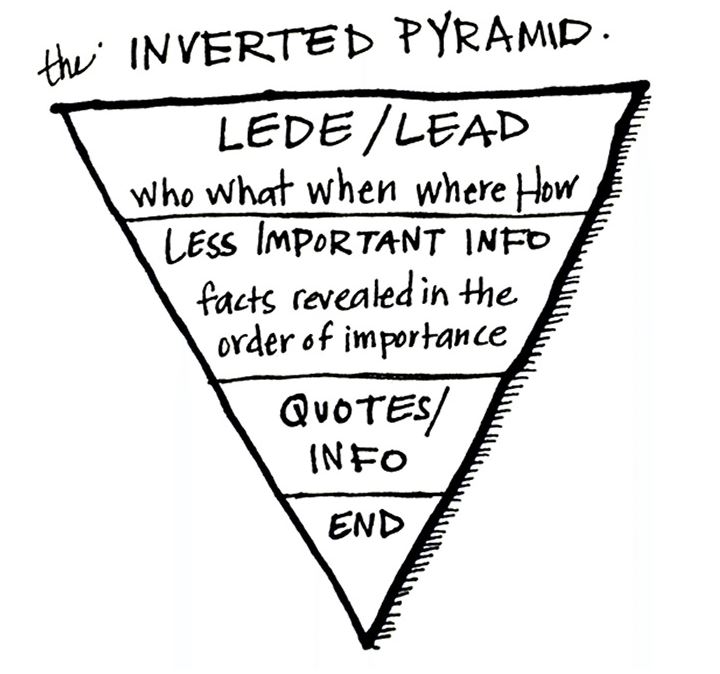
Image Credit: www.robbierichards.com
BloggerXL’s “WES” Method For Compelling Intro
You may have heard of this technique by other names such as Brian Deans “APP” method but BloggerXL has rehashed it into a new version which is up to date.
It goes in depth on how to write a compelling intro for your content and acts as a guide to help you create content easier.
If you do find yourself interested in checking it out, you can do so on the BloggerXL freebies page!
But, in short, the “WES” method goes as follows:
W – Who Is The Article For?
This is where you take your target audience into mind.
E – Empathy
Be understanding, be empathetic towards your readers. Understand their situation.
S – Solution
Your users feel you understand their problem, so now provide them the solution.
As I said. BloggerXL goes more in-depth about the WES method, I have just provided a basic rundown but its a great technique and actually works very well!
Wrapping Things Up
As you’ve probably gathered by now, copywritten content is very important.
It’s going to help you a lot in your efforts of content creation & online marketing. It will take some time to perfect some of the techniques mentioned, however, putting the information provided into practice will help greatly.
Do you put any of these tips into practice?
What do you find is your greatest obstacle with copywriting?
Do you have any further tips?
Let me know down in the comments below!


